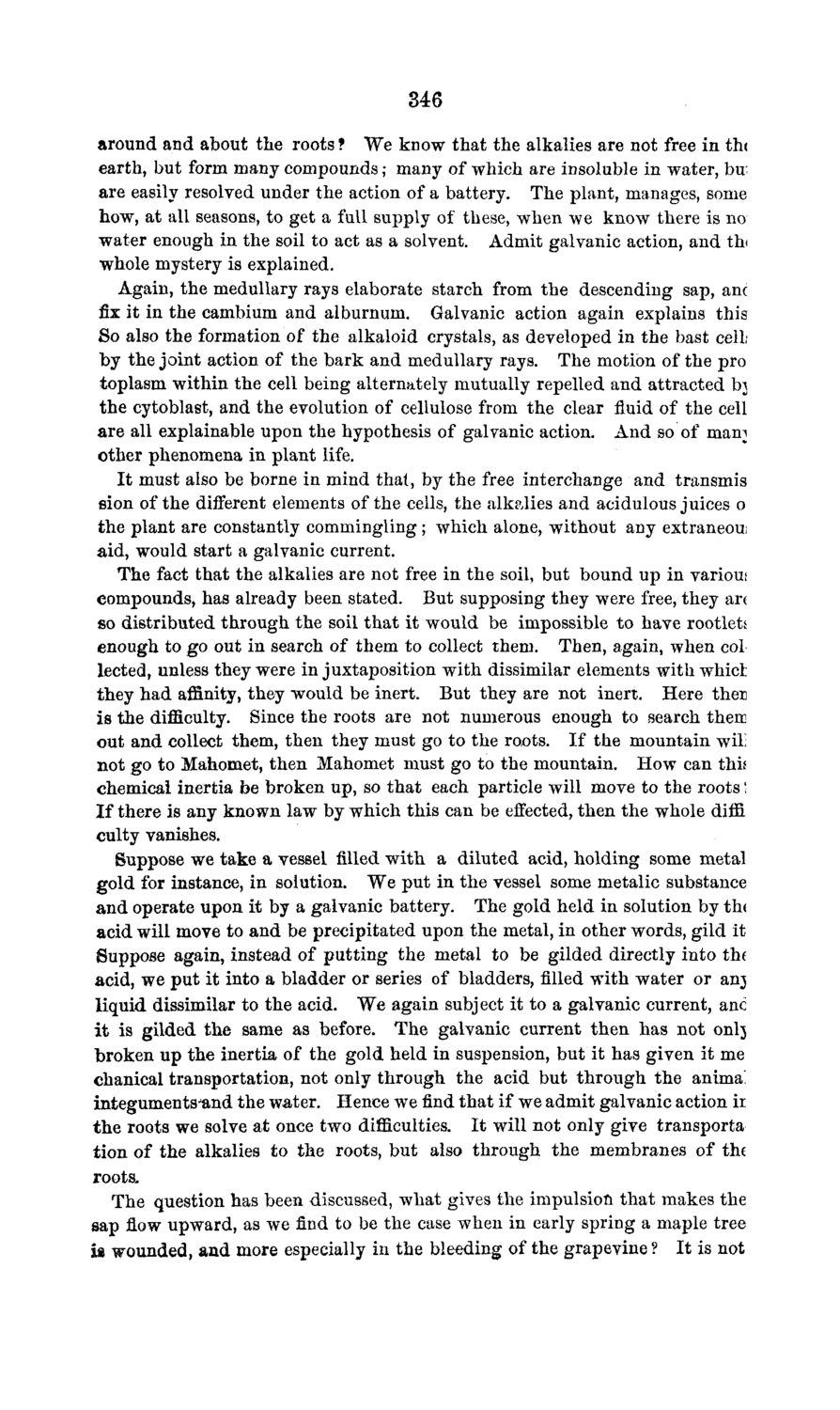| |
| |
Caption: Board of Trustees Minutes - 1869
This is a reduced-resolution page image for fast online browsing.

EXTRACTED TEXT FROM PAGE:
346 around and about the roots ? We know that the alkalies are not free in th< earth, but form many compounds; many of which are insoluble in water, bn are easily resolved under the action of a battery. The plant, manages, some how, at all seasons, to get a full supply of these, when we know there is no water enough in the soil to act as a solvent. Admit galvanic action, and th< whole mystery is explained. Again, the medullary rays elaborate starch from the descending sap, anc fix it in the cambium and alburnum. Galvanic action again explains this So also the formation of the alkaloid crystals, as developed in the bast cell by the joint action of the bark and medullary rays. The motion of the pro toplasm within the cell being alternately mutually repelled and attracted b] the cytoblast, and the evolution of cellulose from the clear fluid of the cell are all explainable upon the hypothesis of galvanic action. And so of mani other phenomena in plant life. It must also be borne in mind that, by the free interchange and transmis sion of the different elements of the cells, the alkalies and acidulous juices o the plant are constantly commingling; which alone, without any extraneou; aid, would start a galvanic current. The fact that the alkalies are not free in the soil, but bound up in variou: compounds, has already been stated. But supposing they were free, they an so distributed through the soil that it would be impossible to have rootlet* enough to go out in search of them to collect them. Then, again, when col lected, unless they were in juxtaposition with dissimilar elements with whicr. they had affinity, they would be inert. But they are not inert. Here ther is the difficulty. Since the roots are not numerous enough to search them out and collect them, then they must go to the roots. If the mountain will not go to Mahomet, then Mahomet must go to the mountain. How can this chemical inertia be broken up, so that each particle will move to the roots) If there is any known law by which this can be effected, then the whole diffl culty vanishes. Suppose we take a vessel filled with a diluted acid, holding some metal gold for instance, in solution. We put in the vessel some metalic substance and operate upon it by a galvanic battery. The gold held in solution by th< acid will move to and be precipitated upon the metal, in other words, gild it Suppose again, instead of putting the metal to be gilded directly into the acid, we put it into a bladder or series of bladders, filled with water or anj liquid dissimilar to the acid. We again subject it to a galvanic current, anc it is gilded the same as before. The galvanic current then has not onlj broken up the inertia of the gold held in suspension, but it has given it me chanical transportation, not only through the acid but through the animal integuments^and the water. Hence we find that if we admit galvanic action ir the roots we solve at once two difficulties. It will not only give transporta tion of the alkalies to the roots, but also through the membranes of the roots. The question has been discussed, what gives the impulsion that makes the sap flow upward, as we find to be the case when in early spring a maple tree is wounded, and more especially in the bleeding of the grapevine ? It is not
| |